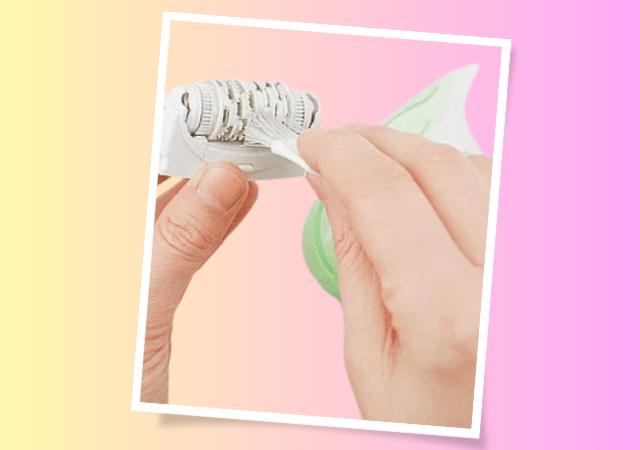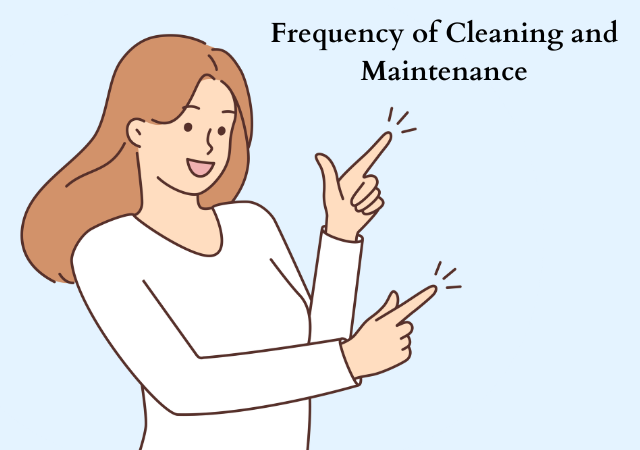How to Clean and Maintain Your Epilator for Longevity
Introduction
I. Understanding Your Epilator:

Before diving into the cleaning process, it’s essential to have a basic understanding of your epilator. There are various types of epilators on the market, including corded and cordless models, wet and dry epilators, and those with different attachments for various body parts. Knowing the specific type and components of your epilator is crucial for effective cleaning and maintenance.
II. Importance of Cleaning:
A. Removing Hair and Debris:
One of the primary reasons for cleaning your epilator is to remove hair and debris that accumulate during use. Hair can get tangled in the tweezers or blades, affecting the device’s performance. Regular cleaning prevents clogging, ensuring that your epilator works efficiently every time.
B. Preventing Bacterial Growth:
Epilators come into direct contact with your skin, making them susceptible to bacterial growth. Failure to clean your device regularly may lead to skin irritations and infections. Cleaning the epilator thoroughly helps eliminate bacteria and keeps your skin healthy.
C. Enhancing Performance:
A clean epilator performs better. When there is no buildup of hair, dirt, or bacteria, the tweezers or blades can grab hair more effectively, providing smoother and more efficient hair removal. Regular cleaning maintains the device’s performance, giving you consistent results over time.
III. Step-by-Step Guide to Cleaning Your Epilator:

A. Gathering Necessary Materials:
Before starting the cleaning process, gather the necessary materials. This typically includes a small brush (often provided with the epilator), a cotton swab, and a mild cleaning solution. Make sure the epilator is unplugged if it’s a corded model.
B. Disassembly of Removable Parts:
If your epilator has removable parts, such as caps or heads for specific areas of the body, carefully disassemble them. Refer to the manufacturer’s instructions for guidance on how to remove and reattach these components.
C. Cleaning the Tweezers and Discs:
Use the small brush to clean the tweezers or discs thoroughly. Gently brush away any hair or debris, paying close attention to the spaces between the tweezers. A cotton swab dipped in the cleaning solution can be used to reach tight spots and ensure a more thorough cleaning.
D. Cleaning the Epilator Head and Body:
For the main body of the epilator, use the brush to remove any loose debris. If the epilator is water-resistant, you may be able to rinse the head under running water. Ensure the device is completely dry before reassembling or using it.
E. Proper Cleaning Techniques for Different Types of Epilators:
Different types of epilators may require slightly varied cleaning approaches. For wet and dry epilators, it’s crucial to follow the manufacturer’s guidelines on water exposure. Corded and cordless models may have different cleaning recommendations. Always refer to the user manual to ensure you’re using the correct cleaning methods for your specific device.
IV. Maintenance Tips:

A. Lubricating Moving Parts:
Some epilators have moving parts, such as rotating discs or springs. Lubricate these parts according to the manufacturer’s instructions to ensure smooth operation. Use the recommended lubricant to avoid damage to the device.
B. Checking for Wear and Tear:
Regularly inspect your epilator for any signs of wear and tear. If you notice damaged parts or a decline in performance, it might be time to replace certain components. Most manufacturers offer replacement parts to keep your device functioning like new.
C. Replacing Worn-Out Parts:
Over time, the tweezers or blades of your epilator may become dull or lose their effectiveness. Check the manufacturer’s guidelines for the recommended lifespan of these parts and replace them as needed. This will contribute significantly to the longevity of your epilator.
D. Storing the Epilator Properly:
Store your epilator in a cool, dry place when not in use. Avoid exposing it to extreme temperatures or direct sunlight. Proper storage protects the device from damage and ensures it remains in optimal condition for longer.
V. Troubleshooting Common Issues:

A. Identifying Problems with Performance:
If you notice a decline in your epilator’s performance, such as reduced hair removal efficiency or increased discomfort during use, it’s essential to identify the root cause. Common issues include dull blades, damaged tweezers, or mechanical problems.
B. Solutions for Common Issues:
Once you’ve identified the problem, refer to the troubleshooting section in your user manual. Many common issues have simple solutions, such as replacing worn-out parts or cleaning the device more thoroughly. Following the manufacturer’s guidelines for troubleshooting can save you from unnecessary frustration and expenses.
C. When to Seek Professional Maintenance:
If you’ve tried troubleshooting and your epilator still isn’t performing optimally, it might be time to seek professional maintenance. Contact the manufacturer’s customer support or an authorized service center for assistance. Attempting to fix complex issues without the necessary expertise may lead to further damage.
VI. Frequency of Cleaning and Maintenance:

A. Establishing a Routine:
To ensure the longevity of your epilator, establish a routine for cleaning and maintenance. The frequency of cleaning depends on how often you use the device. As a general rule, aim to clean it thoroughly after every few uses, and conduct a more detailed maintenance check every few months.
B. Signs That Your Epilator Needs Immediate Attention:
Certain signs indicate that your epilator requires immediate attention. If you experience increased pain during use, notice a decline in performance, or detect an unusual noise, it’s crucial to address these issues promptly. Ignoring these signs may lead to more significant problems.
C. Long-Term Maintenance Schedule:
In addition to regular cleaning, plan for long-term maintenance. This includes periodic checks for wear and tear, lubrication of moving parts, and replacement of worn-out components. Following a proactive maintenance schedule will extend the life of your epilator and keep it operating at its best.
VII. Safety Considerations:

A. Power Off and Unplugging Before Cleaning:
Before starting the cleaning process, always ensure that your epilator is powered off and unplugged, especially if it’s a corded model. This prevents the risk of electric shock and ensures your safety during the cleaning procedure.
B. Using Appropriate Cleaning Agents:
Use mild cleaning solutions recommended by the manufacturer to avoid damage to the epilator’s components. Harsh chemicals may degrade the materials and compromise the device’s performance. Always adhere to the suggested cleaning agents in the user manual.
C. Avoiding Damage During the Cleaning Process:
Handle your epilator with care during the cleaning process. Avoid using excessive force, especially when removing and reattaching components. Gentle cleaning techniques prevent unnecessary wear and potential damage to the device.
Conclusion (How to Clean and Maintain Your Epilator for Longevity)

My name is Rohit Vagh and I’m a content writer specializing in fashion and lifestyle. I have three years of experience in this field and have written various articles. My writing style is creative and engaging, and I strive to create content that resonates with my readers. I have a deep passion for fashion and am constantly researching the latest trends and styles to make sure my readers are up to date. I’m excited to continue my career in blogging, and I’m always looking for new opportunities in the fashion and lifestyle space.





